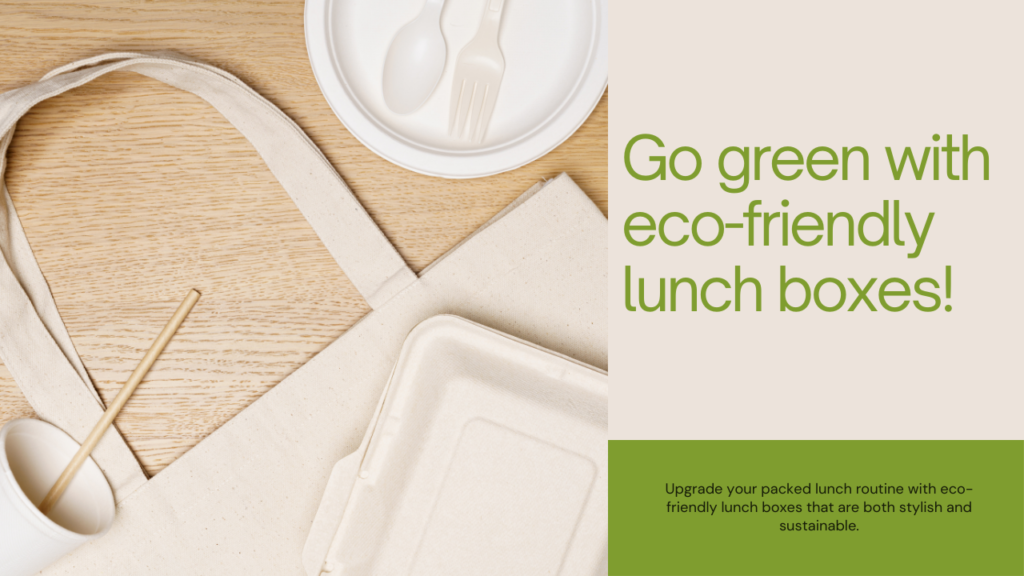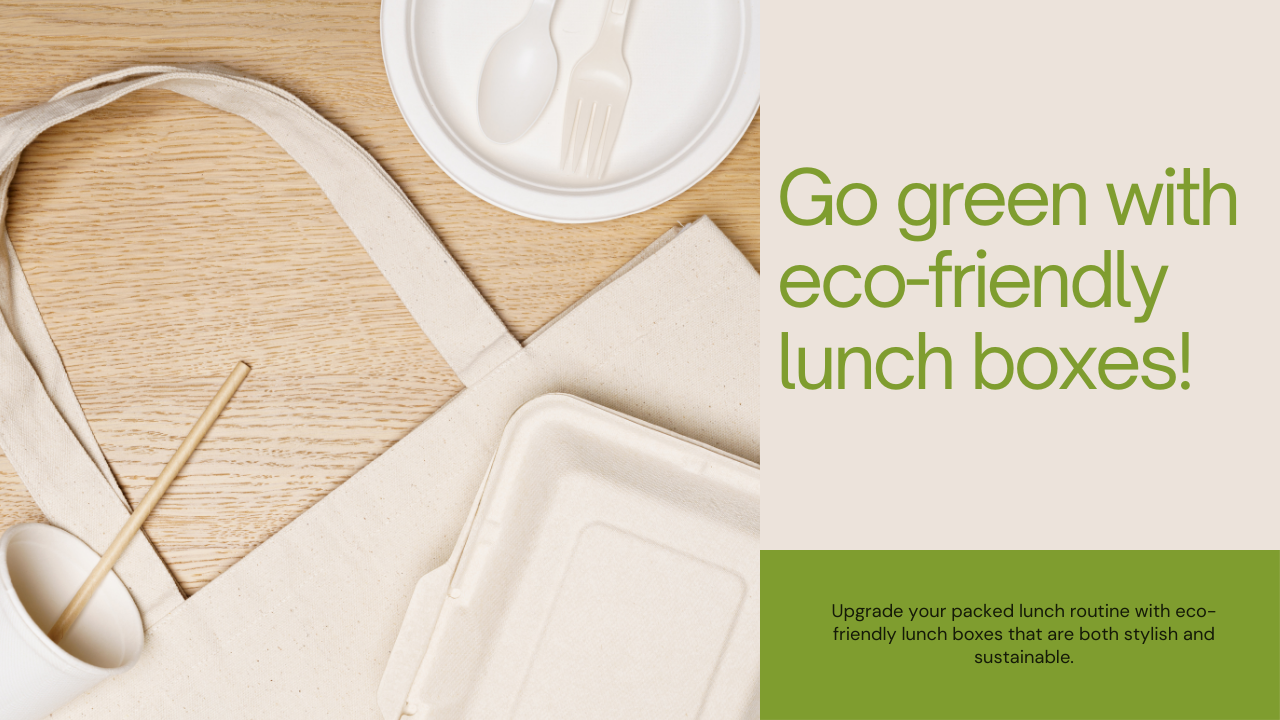
Unwrapping the Green Revolution: Why Eco-Friendly Lunchboxes Matter
In the first section, we’ll delve into the environmental impact of traditional lunch packaging and the urgent need for eco-friendly alternatives.
From plastic pollution to the depletion of natural resources, we’ll explore how switching to sustainable lunch boxes can contribute to a healthier planet.
Beyond Aesthetics: The Functional Benefits of Eco-Friendly Lunchboxes
This section will focus on the practical advantages of choosing eco-friendly lunch boxes.
From innovative designs that keep food fresh to materials that are easy to clean, readers will discover how these sustainable options benefit the environment and enhance the overall lunch-packing experience.
Navigating the Options: A Comprehensive Guide to Eco-Friendly Materials
In this segment, we’ll break down the materials used in eco-friendly lunchboxes, including stainless steel, bamboo, and biodegradable plastics.
By exploring the pros and cons of each material, readers will gain insights to make an informed decision based on their preferences and lifestyle.
Kid-Friendly and Planet-Friendly: Choosing Eco Lunchboxes for the Whole Family
This section will cater specifically to parents looking for eco-friendly lunchbox options for their children. From whimsical designs to durable constructions, we’ll guide readers in selecting lunchboxes that appeal to kids and align with sustainable practices, fostering an early appreciation for environmental responsibility.
The Green Journey Continues: Tips for Maintaining and Recycling Eco-Friendly Lunchboxes
Continuing the exploration of eco-friendly lunchboxes, it’s essential to recognize the broader impact of our choices on the environment.
The first section, “Unwrapping the Green Revolution,” emphasizes the urgency of adopting sustainable practices.
Moreover, traditional lunch packaging often comprises single-use plastics and non-biodegradable materials.
Therefore, it contributes significantly to pollution and resource depletion.
By switching to eco-friendly lunchboxes, individuals can play a crucial role in reducing their ecological footprint and contributing to a healthier planet.
Moving on to “Beyond Aesthetics,” we delve into the functional benefits of eco-friendly lunch boxes.
It is not just about being environmentally conscious; these lunchboxes offer practical advantages.
Because of insulated designs that keep food at the right temperature with easy-to-clean materials, readers will discover that sustainable choices can enhance the lunch-packing experience.
As a result, it is both convenient and eco-friendly.
In “Navigating the Options,” we provide a comprehensive guide to the materials used in eco-friendly lunch boxes. Stainless steel, bamboo, and biodegradable plastics have unique characteristics and considerations.
This section empowers readers to make choices aligned with their preferences, lifestyles, and commitment to sustainability.
For parents seeking eco-friendly options for their children, “Kid-Friendly and Planet-Friendly” is a valuable resource. We explore lunchbox designs that appeal to kids’ tastes and have the durability to withstand their active lifestyles. Parents can raise environmentally conscious individuals by instilling eco-friendly habits early on.
Continuing the exploration of eco-friendly lunchboxes, we must recognize the broader impact of our choices on the environment.
So, “Unwrapping the Green Revolution” emphasizes the urgency of adopting sustainable practices.
Again, traditional lunch packaging is often composed of single-use plastics and non-biodegradable materials.
Therefore, it contributes significantly to pollution and resource depletion.
By switching to eco-friendly lunchboxes, individuals can play a crucial role in reducing their ecological footprint and contributing to a healthier planet.
Moving on to “Beyond Aesthetics,” we delve into the functional benefits of eco-friendly lunch boxes.
It’s not just about being environmentally conscious; these lunchboxes offer practical advantages.
From insulated designs that keep food at the right temperature to easy-to-clean materials,
Readers will discover that sustainable choices can enhance the lunch-packing experience. As a result, it is both convenient and eco-friendly.
In “Navigating the Options,” we provide a comprehensive guide to the materials used in eco-friendly lunch boxes. Stainless steel, bamboo, and biodegradable plastics have unique characteristics and considerations. This section empowers readers to make choices aligned with their preferences, lifestyles, and commitment to sustainability.
For parents seeking eco-friendly options for their children, “Kid-Friendly and Planet-Friendly” is a valuable resource. We explore lunchbox designs that appeal to kids’ tastes and have the durability to withstand their active lifestyles. Parents can raise environmentally conscious individuals by instilling eco-friendly habits early on.





Leave a Reply